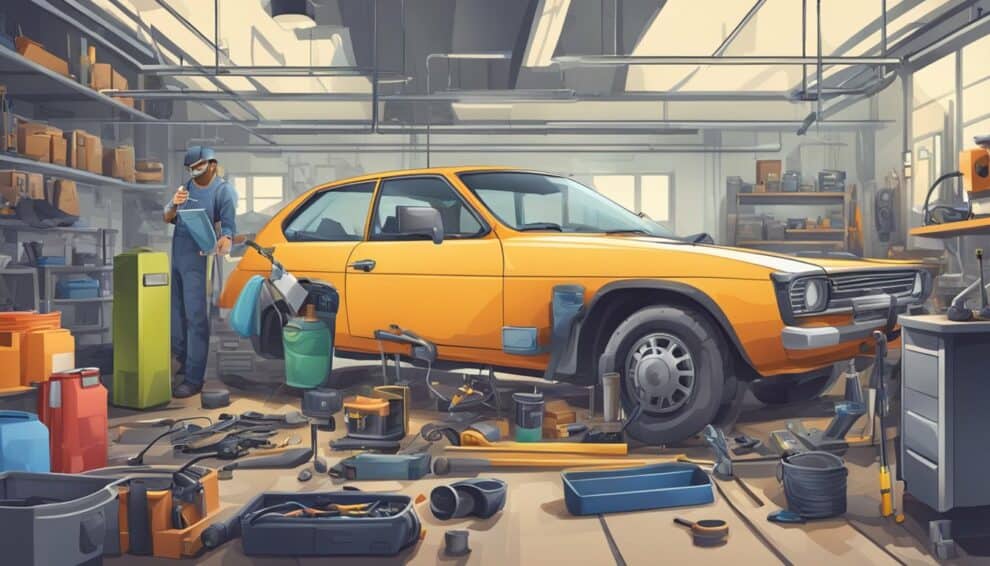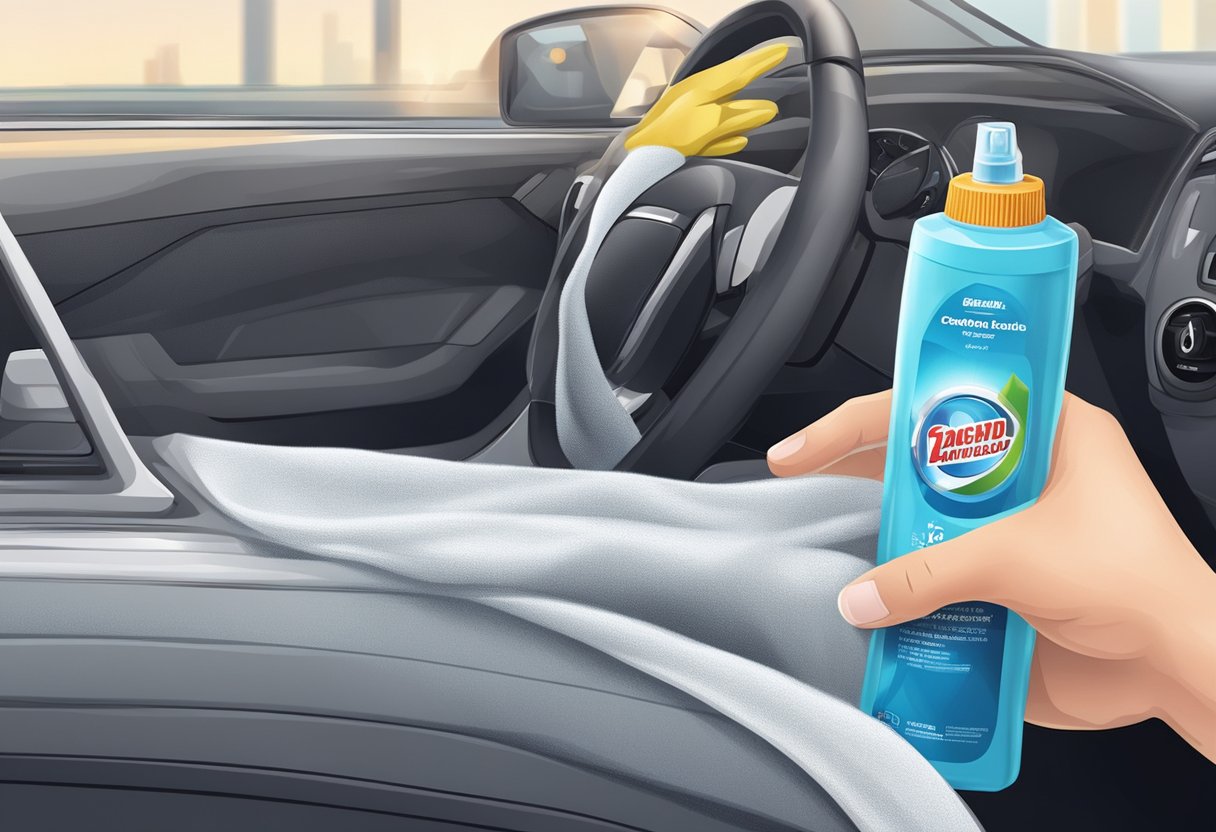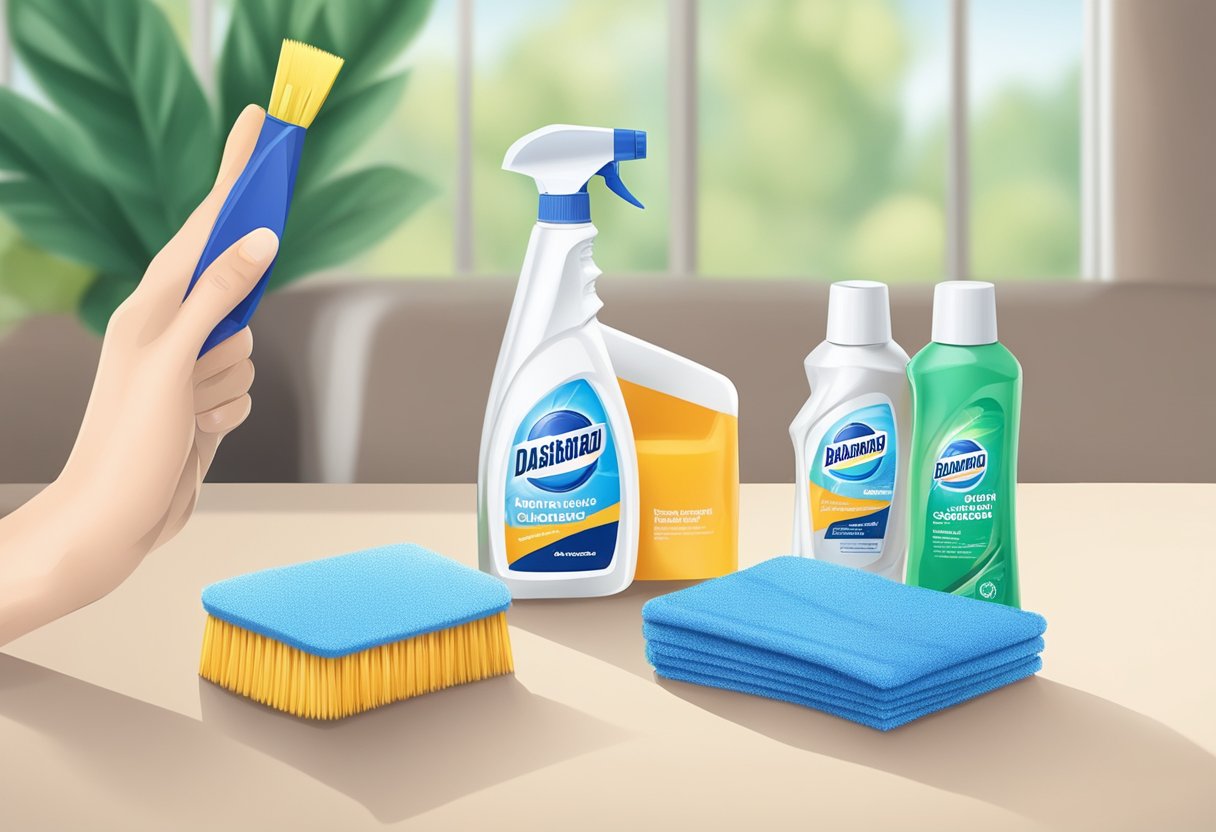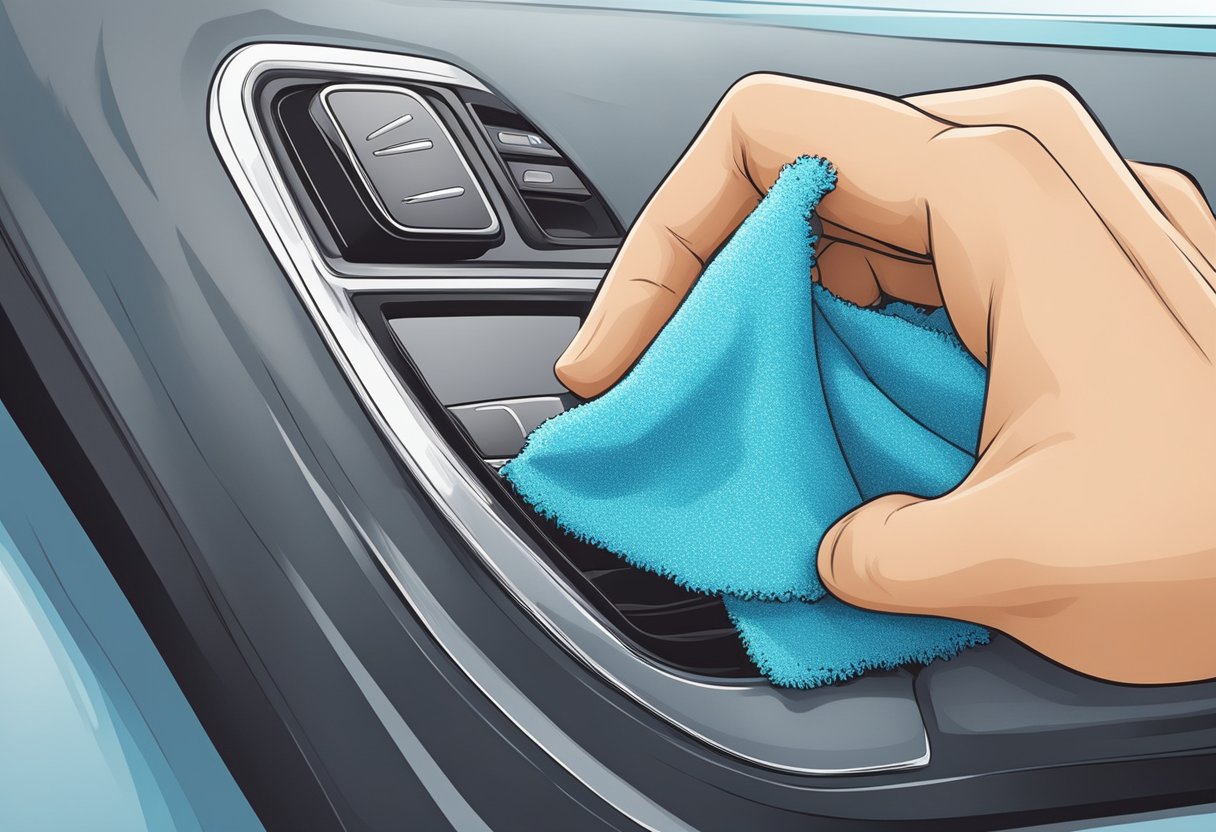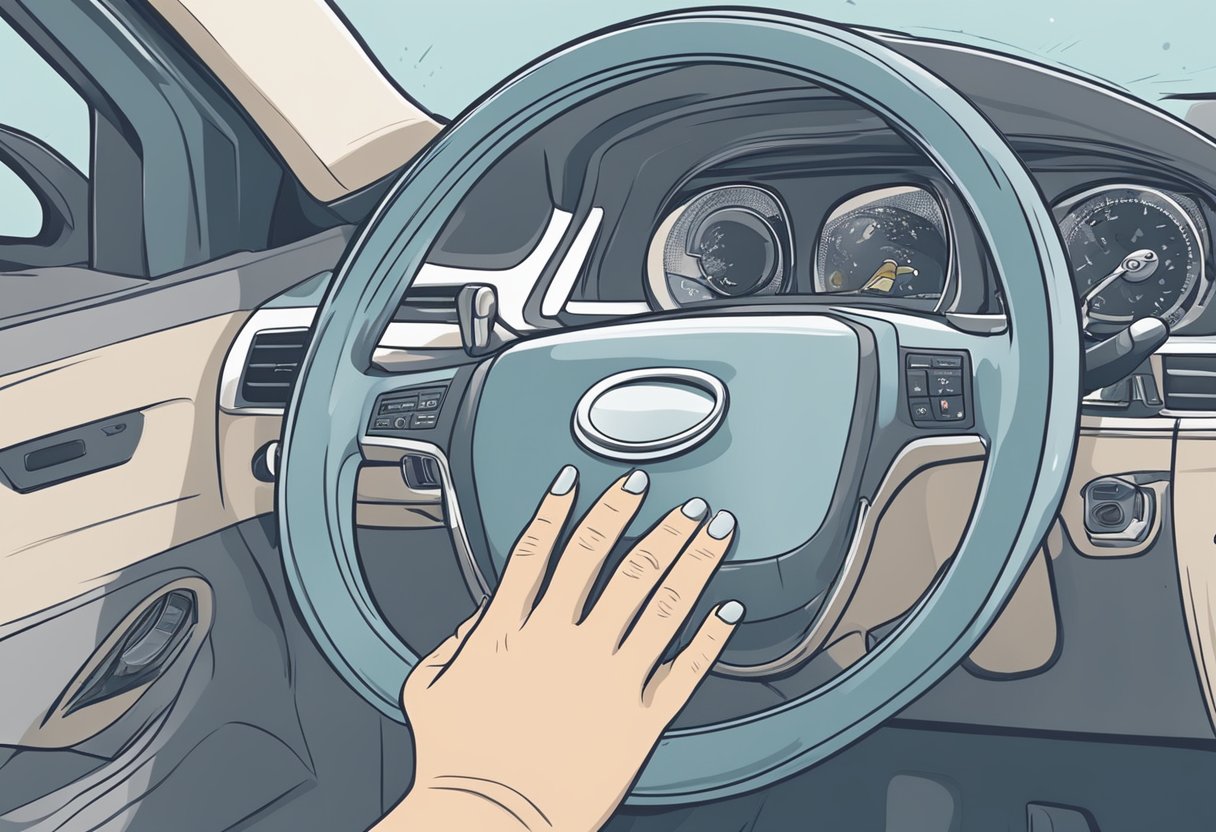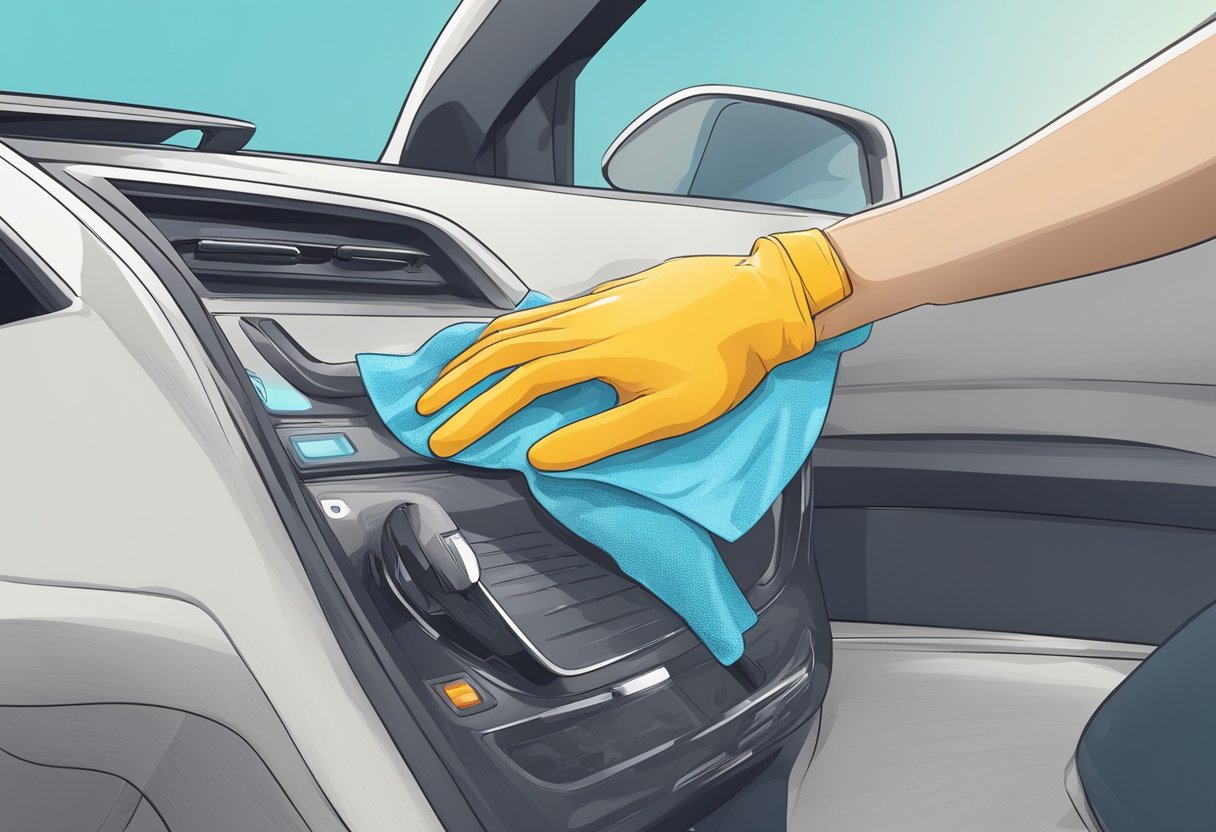Cleaning a sticky dashboard can be a frustrating and time-consuming task, especially if you’re not sure which products are safe to use on your car’s interior. However, with the right tools and techniques, you can easily restore your dashboard to its original condition. In this article, we’ll share some effective solutions for cleaning a sticky dashboard that will leave it looking and feeling like new.
One of the most common causes of a sticky dashboard is the accumulation of dust and dirt over time. This can be exacerbated by exposure to sunlight and heat, which can cause the dashboard to become sticky and shiny. To clean a sticky dashboard, you’ll need to remove any dirt and debris first, before applying a cleaning solution.
There are a variety of cleaning solutions available for cleaning a sticky dashboard, ranging from simple household products to specialized car cleaning products. However, it’s important to choose a solution that is safe for use on your car’s interior, as some products can cause damage or discoloration. In the following sections, we’ll explore some of the most effective solutions for cleaning a sticky dashboard, so you can choose the one that’s right for you.
Understanding the Causes of a Sticky Dashboard
If you have a sticky dashboard, you’re not alone. Many car owners have experienced this issue, and it can be frustrating. But before you can effectively clean your dashboard, it’s important to understand what causes it to become sticky in the first place.
One of the main causes of a sticky dashboard is exposure to sunlight. Over time, the sun’s rays can cause the dashboard to become sticky and tacky. This is because the heat from the sun can cause the chemicals in the dashboard to break down and become sticky.
Another cause of a sticky dashboard is exposure to dirt and dust. When dirt and dust accumulate on the dashboard, it can mix with the chemicals in the dashboard and cause it to become sticky.
In addition, some cleaning products can actually make the problem worse. Certain chemicals can react with the dashboard and cause it to become even stickier.
It’s important to note that not all dashboards will become sticky. Some materials are more prone to stickiness than others. For example, vinyl and rubber dashboards are more likely to become sticky than leather or cloth dashboards.
Now that you understand the causes of a sticky dashboard, you can take steps to prevent it from happening in the future.
Gathering the Necessary Cleaning Supplies
Cleaning a sticky dashboard requires a few essential cleaning supplies. Here are the things you need to gather before you start cleaning your dashboard.
Choosing the Right Cleaning Agents
The first thing you need to consider when cleaning your sticky dashboard is the cleaning agent you will use. You want to choose a cleaning agent that can effectively remove the stickiness without damaging your dashboard. Here are some cleaning agents you can use:
-
Mild soap and water: This is a safe and effective cleaning agent for most dashboards. Mix a few drops of mild soap with warm water and use a soft cloth to wipe your dashboard.
-
Vinegar and water: Vinegar is an excellent natural cleaning agent that can remove stickiness and grime from your dashboard. Mix equal parts of vinegar and water and use a soft cloth to wipe your dashboard.
-
Commercial dashboard cleaner: There are many commercial dashboard cleaners available in the market. Choose a cleaner that is safe for your dashboard and follow the instructions on the label.
Essential Cleaning Tools
Apart from cleaning agents, you also need some essential cleaning tools to clean your sticky dashboard. Here are the tools you need:
-
Microfiber cloth: A microfiber cloth is a soft and gentle cloth that can effectively clean your dashboard without scratching it.
-
Soft-bristled brush: A soft-bristled brush can help you remove dust and dirt from hard-to-reach areas of your dashboard.
-
Vacuum cleaner: A vacuum cleaner with a soft brush attachment can help you remove loose dirt and debris from your dashboard.
In conclusion, gathering the necessary cleaning supplies is the first step to cleaning your sticky dashboard effectively. Choose the right cleaning agents and essential cleaning tools to achieve the best results.
Step-by-Step Cleaning Process
Cleaning a sticky dashboard can be a daunting task, but with the right tools and techniques, it can be done effectively. Here is a step-by-step process to help you clean your sticky dashboard:
Pre-Cleaning Preparation
Before starting the cleaning process, it is important to remove any loose debris and dust from the dashboard. Use a soft-bristled brush or a microfiber cloth to gently remove any debris or dust. This will prevent any scratches or damage to the dashboard during the cleaning process.
Applying the Cleaning Solution
Once the dashboard is free of loose debris, it’s time to apply the cleaning solution. There are several cleaning solutions available in the market, but it’s important to choose the one that’s suitable for your dashboard material. Always read the label and instructions carefully before applying the cleaning solution.
Apply the cleaning solution to a microfiber cloth and gently wipe the dashboard. Avoid spraying the solution directly onto the dashboard as it can damage the electrical components. Start from the top of the dashboard and work your way down.
Scrubbing and Wiping Techniques
For stubborn sticky spots, use a soft-bristled brush to gently scrub the affected area. Be careful not to use too much pressure as it can damage the dashboard. Once you’ve scrubbed the area, wipe it with a microfiber cloth.
Continue cleaning the dashboard in sections until you’ve covered the entire dashboard. Once you’re done, use a clean microfiber cloth to wipe the dashboard again to remove any excess cleaning solution.
In conclusion, cleaning a sticky dashboard requires patience and the right tools. By following this step-by-step process, you can effectively clean your dashboard and restore it to its original shine.
Can the solutions for cleaning a sticky dashboard also be used to remove bumper scratches from a car?
When searching for car bumper scratch removal tips, you may come across solutions for cleaning a sticky dashboard. However, it’s important to use specific products and techniques for each issue. While a cleaner might work for a dashboard, it may not be effective for removing scratches from a car bumper.
Preventing Future Dashboard Stickiness
To avoid dealing with a sticky dashboard again, there are some preventative measures you can take. Regular maintenance is key to keeping your dashboard clean and free of any sticky residue. Additionally, there are protective measures you can consider to help minimize the risk of stickiness in the future.
Regular Maintenance Tips
Here are some regular maintenance tips to help keep your dashboard clean and free of stickiness:
-
Clean your dashboard regularly: Use a microfiber cloth and a mild cleaning solution to wipe down your dashboard regularly. This will help remove any dirt, dust, or grime that can build up over time and lead to stickiness.
-
Avoid using harsh chemicals: Harsh chemicals can damage your dashboard and make it more susceptible to stickiness. Stick to mild cleaning solutions and avoid using anything abrasive.
-
Keep your car out of direct sunlight: Direct sunlight can cause your dashboard to become hot and sticky. Whenever possible, park your car in a shaded area or use a sunshade to protect your dashboard from the sun.
Protective Measures to Consider
In addition to regular maintenance, there are some protective measures you can consider to help prevent stickiness in the future:
-
Use a dashboard cover: A dashboard cover can help protect your dashboard from the sun and other environmental factors that can cause stickiness. It can also help minimize the amount of dust and dirt that accumulates on your dashboard.
-
Apply a protective coating: There are protective coatings that you can apply to your dashboard to help prevent stickiness. These coatings can also help protect your dashboard from UV rays and other environmental factors.
-
Avoid eating in your car: Food and drinks can spill on your dashboard and cause stickiness. Try to avoid eating in your car or at least be extra careful when you do.
By following these regular maintenance tips and considering some protective measures, you can help prevent your dashboard from becoming sticky in the future.
Troubleshooting Common Cleaning Challenges
Cleaning a sticky dashboard can be a challenging task, especially if you encounter some unexpected cleaning challenges. Here are some common cleaning challenges and effective solutions to help you troubleshoot them:
Challenge: Stubborn Stains
If you have stubborn stains on your dashboard, don’t worry. You can remove them with a few simple steps. First, mix equal parts of water and vinegar in a spray bottle. Spray the mixture on the stain and let it sit for a few minutes. Then, use a soft-bristled brush to gently scrub the stain. Finally, wipe the area with a clean, damp cloth.
Challenge: Greasy Residue
If you have greasy residue on your dashboard, it can be difficult to remove. To get rid of it, mix a small amount of dish soap with warm water. Dip a clean cloth in the soapy water and wring it out. Then, gently scrub the area with the cloth. Finally, rinse the area with a clean, damp cloth.
Challenge: Lingering Odors
If you have lingering odors in your car, it can be frustrating. To get rid of them, sprinkle some baking soda on your dashboard and let it sit for a few hours. Then, use a vacuum cleaner to remove the baking soda. Alternatively, you can use an odor eliminator spray to freshen up your car’s interior.
By following these effective solutions, you can easily troubleshoot common cleaning challenges and keep your dashboard looking clean and shiny.
As an Amazon Associate we earn from qualifying purchases.







